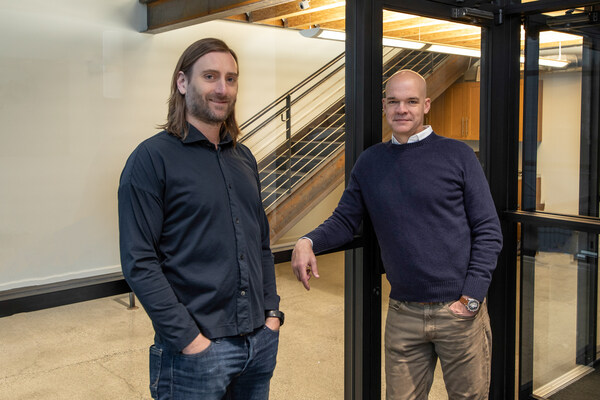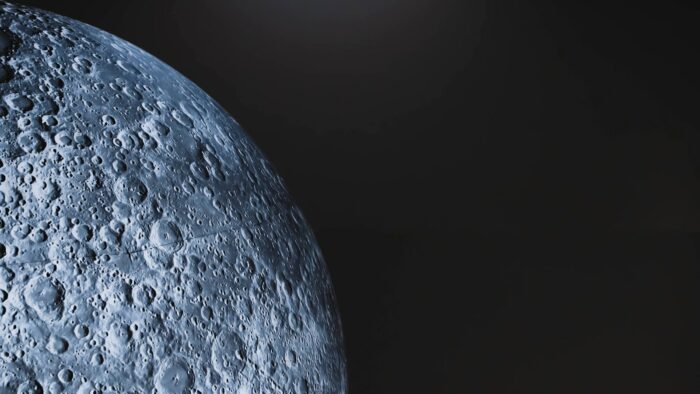Insider Brief
- The cost of launching payloads increases exponentially with higher delta-v requirements, impacting mission affordability.
- Reusability lowers costs for low-delta-v missions but offers limited advantages for deep-space missions requiring expendable stages.
- Advancements in alternative propulsion, such as ion and nuclear thermal engines, could help mitigate escalating space exploration costs.
- Image: SpaceX
The farther a spacecraft goes, the more expensive it gets — exponentially so.
That’s the conclusion of a study by engineer Philip Swan of The Atlantis Project, which finds that the cost of launching a kilogram of payload increases dramatically as missions require higher velocity, or delta-v.
Using data from past missions, Swan quantified the relationship between launch cost and delta-v, revealing that the increase follows an exponential curve. While factors like crewed vs. robotic missions, payload size and flight frequency influence costs, the study also found that delta-v remains the strongest predictor of mission expenses across a wide range of cases.

The study notes that while it has been widely assumed that delta-v affects mission costs, this research attempts to provide a formalized model of that relationship. The findings help explain why deep-space missions remain costly despite advances in launch technology.
How Much Does Extra Speed Cost?
Delta-v, or change in velocity, is the speed a spacecraft needs to reach its destination. A mission to low Earth orbit requires about 9,400 meters per second (m/s) of delta-v, while a Mars sample return mission needs over 20,000 m/s. According to Swan’s analysis, every additional unit of delta-v leads to an exponential rise in cost.
For example, launching a kilogram of payload to low Earth orbit aboard a SpaceX Falcon 9 costs roughly $7,342. By contrast, delivering a kilogram to the Moon’s surface costs about $1.2 million, and a Mars sample return mission could exceed $4 billion per kilogram. The study suggests that a clearer understanding of how delta-v impacts cost could help space planners make better-informed decisions.
This cost escalation is due to the fundamental physics of rocket propulsion. The rocket equation dictates that increasing delta-v requires exponentially more fuel, which in turn demands larger launch vehicles. As missions move beyond Earth’s gravity well, additional stages or alternative propulsion methods are required, further raising costs. This helps explain why robotic probes dominate deep-space exploration while human missions remain largely confined to low Earth orbit.

The Reusability Question
One of the more surprising findings is the impact of reusability. While reusable rockets like Falcon 9 have lowered costs for low-orbit missions, their advantage diminishes for high-delta-v missions. The study notes that SpaceX’s expendable Falcon Heavy configuration, used for NASA’s Europa Clipper mission, was competitively priced despite not being reused.
Still, the cost gap between reusable and expendable launches remains an open question. The study highlights difficulty in explaining why the partially reusable version of Falcon Heavy appears to perform better on a cost-per-kg basis than the expendable version, suggesting that pricing strategies or strategic bidding may play a role.
Reusability has long been viewed as a game-changer for space access, reducing costs by allowing vehicles to be used multiple times rather than discarded after a single flight. However, the effectiveness of reusability varies with mission type. While it has driven down costs for frequent, low-orbit flights, missions requiring high delta-v may see fewer benefits since expendable stages remain necessary for upper stages or deep-space travel.
Policy and Industry Implications
Understanding the cost curve of spaceflight has major implications for mission planning. The study raises questions such as whether funding should go toward one high-delta-v mission or multiple lower-delta-v missions. It also provides a framework for evaluating new propulsion technologies like nuclear thermal or ion propulsion.
The analysis also offers insight into the challenges facing NASA’s Artemis and Mars exploration programs. The study estimates that NASA’s planned Mars Sample Return mission, requiring over 20,000 m/s of delta-v, will cost between $8 billion and $11 billion.
While not discussed directly in the study, alternative propulsion technologies could help break the exponential cost curve. Ion propulsion, for example, offers significantly higher fuel efficiency than chemical rockets but at the cost of much lower thrust. Nuclear thermal propulsion, another emerging technology, could provide a balance between thrust and efficiency, potentially reducing the cost of high-delta-v missions. However, these technologies remain in early stages of development and have yet to be fully integrated into crewed spaceflight.
The Role of Government and Private Industry
Government space agencies have historically been the primary players in deep-space exploration, but commercial firms are increasingly taking on larger roles. Companies like SpaceX, Blue Origin, and Rocket Lab are investing in reusable launch technology and alternative propulsion methods to reduce costs. However, most commercial activity remains focused on lower delta-v destinations such as low Earth orbit, where economic incentives are stronger.
NASA and other space agencies continue to fund high-delta-v missions for scientific exploration and planetary defense. Missions such as Europa Clipper, the James Webb Space Telescope, and Mars Sample Return would not be possible without significant government investment. The study suggests that balancing private-sector efficiency with public-sector ambitions will be critical to sustaining future deep-space missions.
Methodology
To establish the relationship between launch costs and delta-v, the study analyzed publicly available data from a variety of space missions. The researchers sought cost and delta-v values from reputable sources, though in many cases, the available information required further interpretation. Some missions provided a “C3” value, which necessitated the use of orbital mechanics to estimate delta-v requirements. In other instances, inconsistencies in reported launch costs required careful cross-referencing and analysis.
Data points were compiled into a spreadsheet and plotted on an x-y scatterplot, with delta-v on the x-axis and cost-per-kilogram on the y-axis. The analysis used both linear and logarithmic scales to capture the trends more effectively. An exponential trendline was applied to the dataset, providing a mathematical model that reflects the observed cost escalation as delta-v increases.
For missions that utilized aerobraking, a conversion process was employed to generate an “equivalent delta-v” value, ensuring that these missions could be compared fairly against those relying solely on chemical propulsion. This adjustment accounted for the energy savings of atmospheric braking while maintaining consistency in cost evaluation across different mission profiles.
What’s Next?
Swan acknowledges that the study is a starting point. Other factors — such as payload size, mission frequency, and economies of scale — also influence costs. The study suggests that a more comprehensive analysis would consider cost-per-kg as a function of multiple parameters, including mission payload and launch year.
In an era where commercial spaceflight is expanding, understanding that cost curve is more important than ever. Future missions will need to incorporate more cost-effective solutions, whether through better fuel efficiency, innovative spacecraft design, or new propulsion methods.
The study has not been officially peer reviewed. Researchers often publish directly to online servers and pre-print servers for immediate feedback. Please review the paper for a more comprehensive, more technical examination than this summary article can provide.
Share this article:










